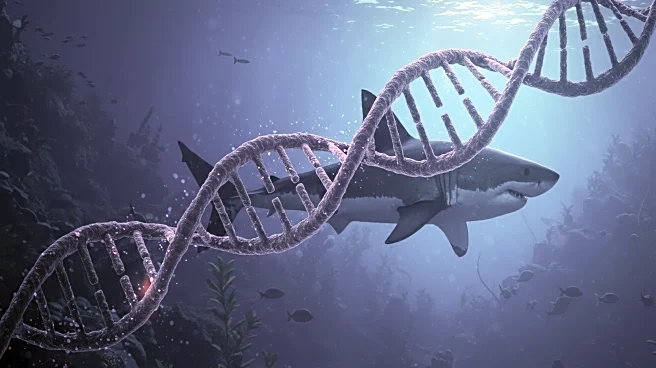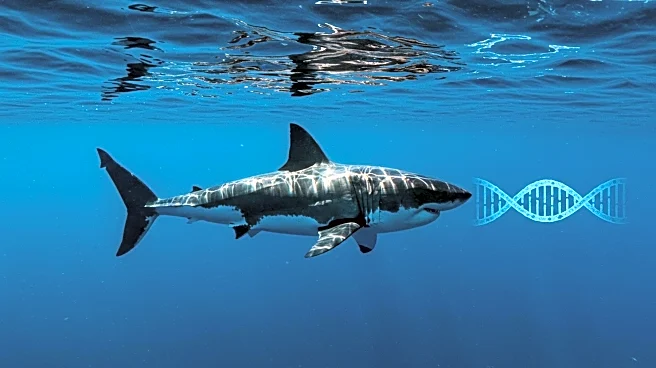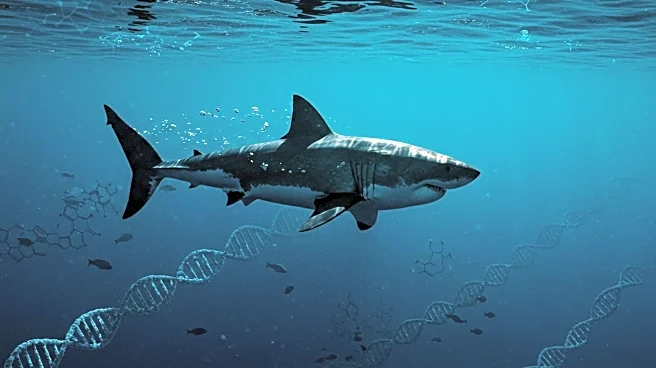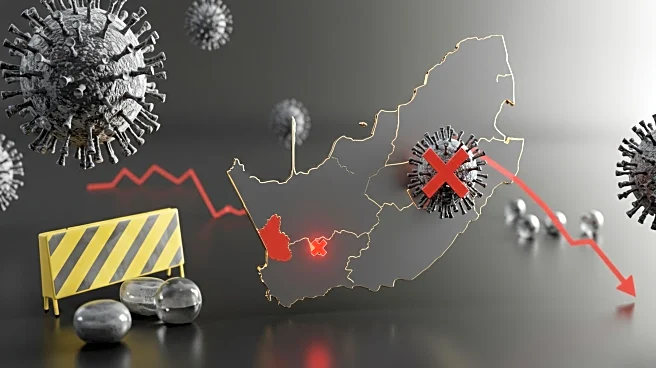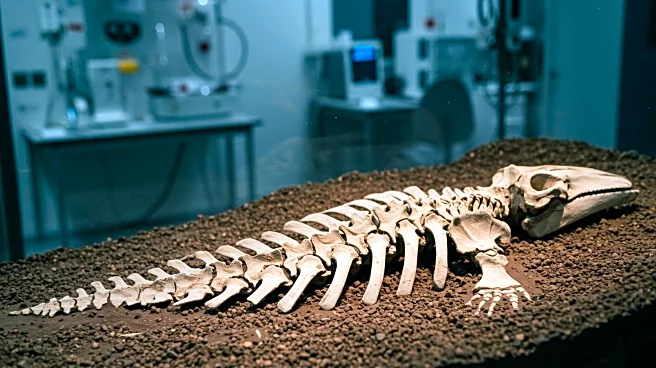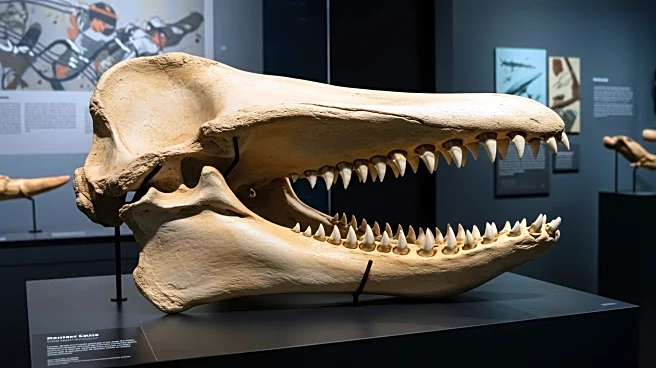What's Happening?
A recent study has revealed a genetic mystery in great white sharks, challenging previous theories about their migration patterns. Researchers analyzed genetic differences between global white shark populations and found that these sharks were restricted to a single population in the Indo-Pacific Ocean at the end of the last ice age, approximately 10,000 years ago. Since then, they have expanded to their current global distribution. The study, published in the Proceedings of the National Academy of Sciences, shows that white sharks began genetically diverging about 7,000 years ago, forming distinct populations in the southern hemisphere around Australia and South Africa, the northern Atlantic, and the northern Pacific. Despite their widespread distribution, the number of great white sharks remains low, with an estimated 20,000 individuals globally.
Why It's Important?
The findings are significant as they challenge the long-held migration theory, which suggested that male sharks traveled vast distances while females returned to the same place to breed. This theory was used to explain the differences in nuclear and mitochondrial DNA among shark populations. The study's results indicate that the genetic differences cannot be explained by migration patterns alone, suggesting other evolutionary forces may be at play. Understanding these genetic mysteries is crucial for conservation efforts, as small populations like those of great white sharks are vulnerable to extinction. The study highlights the need for further research to uncover the factors influencing shark genetics, which could inform strategies to protect these apex predators.
What's Next?
Researchers are considering alternative explanations for the genetic differences observed in great white sharks. One possibility is that natural selection is responsible, although this seems unlikely due to the small population sizes. The study's authors suggest that further research is needed to explore other evolutionary forces that could account for the genetic variations. This ongoing investigation may lead to new insights into the biology and conservation of great white sharks, potentially influencing policies and practices aimed at preserving their populations.
Beyond the Headlines
The study raises questions about the role of natural selection in small populations and its potential impact on genetic diversity. If natural selection is indeed a factor, it would imply a strong selective pressure that could have significant implications for the survival and adaptation of great white sharks. This research also underscores the complexity of marine ecosystems and the challenges faced in understanding the genetic makeup of species with limited populations. The findings may prompt a reevaluation of conservation strategies, emphasizing the importance of genetic research in protecting endangered species.
